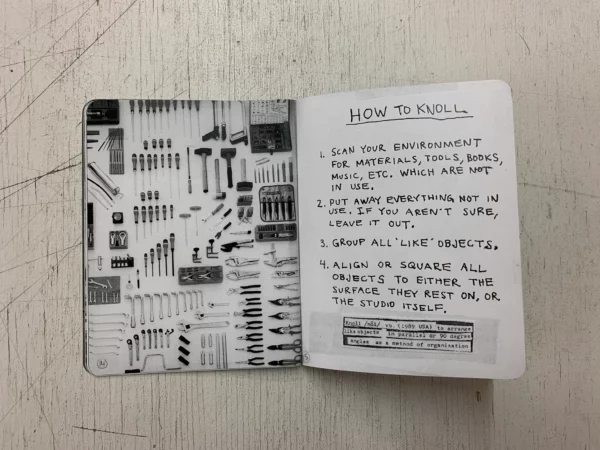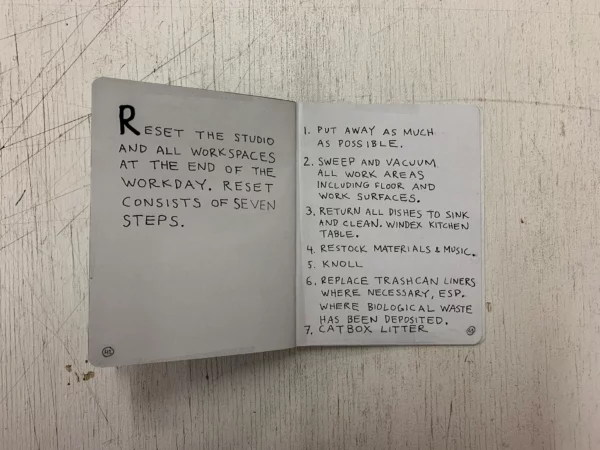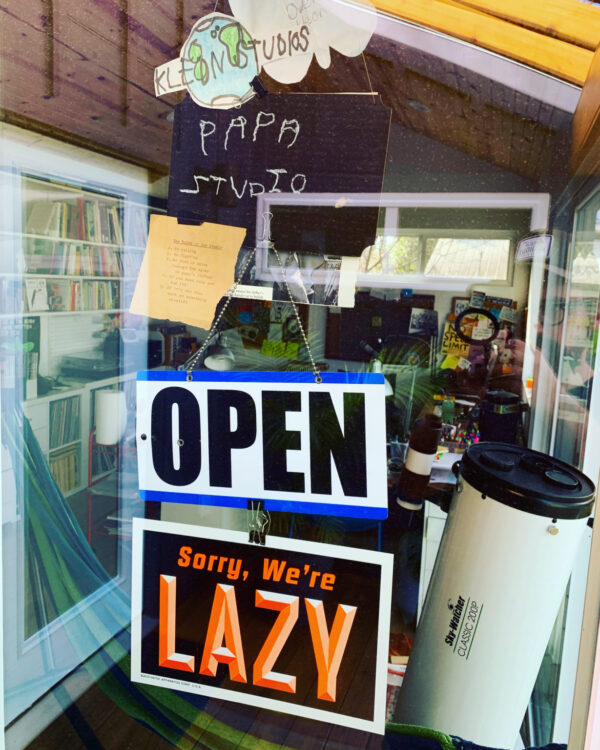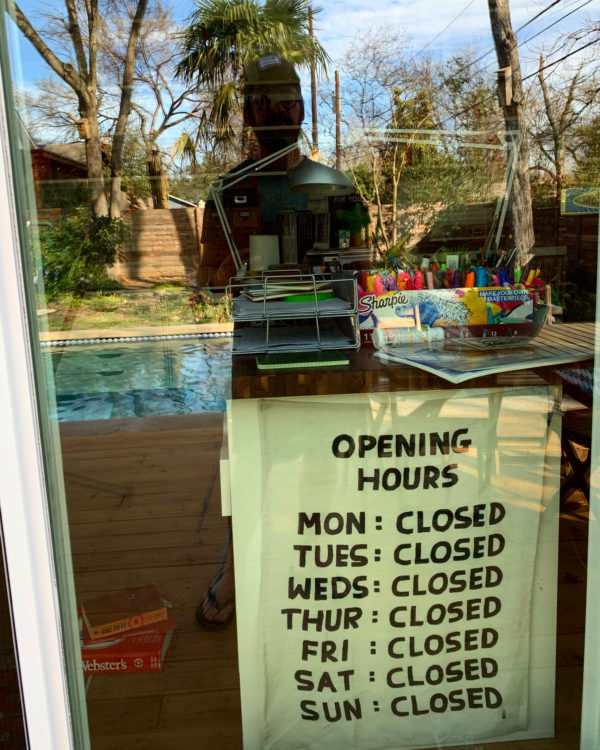Elmore Leonard said, “Writer’s block just means you got up from your desk.”
Always be knolling

Here are some pages from Tom Sachs’ zine, Ten Bullets. (More bullets here.)
He suggests that in the studio one should “always be knolling.”
See also: “When in doubt, tidy up.”

Studio as a verb

“Get yourself a little studietto where no one will bother you at all.”
—Cennino Cennini, Book of Art, c. 1400s
A delightful bit from Tom Stammers’ review of David Hall’s The Artist’s Studio: A Cultural History:
it’s helpful to know that the term ‘studio’ derives from a verb as well as a noun. Studiolo denoted the scholar’s study or cabinet, but there was also studiare, linked to a certain kind of diligent or pleasurable work, which could take place anywhere.
Another interesting bit on the difference between a “studio” and a “workshop”:
The idea that the artist’s studio was somehow different from the artisan’s workshop took off in the 15th century. In Hall’s phrase, ‘the Renaissance concept of the studio involved a literal and symbolic turning away from the street.’ The most skilful and profitable craftsman of the Middle Ages was the goldsmith, whose reputation for honest dealing was predicated on the transparency of his working practices. Goldsmiths’ shops were open to the street, and to watching customers. By contrast, the 15th-century artist’s studio was premised on a measure of secrecy.
I like this tension between “studio” and “workshop.” I would like to think of my space as serving both functions, occupying a place somewhere in the middle — a place I go to be, by myself, but also a place where the people are free to visit me. (I love a good visit.)
But even before I built my current studio, I knew that a great deal of my work “could take place anywhere,” and indeed, a great deal of it takes place, as it did before, in the morning at the kitchen table.
Words pinned to the wall

Here are some recent additions to my inspiration corner beside my desk.
Here’s a bit from Raymond Carver’s essay, “On Writing”:
Isak Dinesen said that she wrote a little every day, without hope and without despair. Someday I’ll put that on a three-by-five card and tape it to the wall beside my desk. I have some three-by-five cards on the wall now. “Fundamental accuracy of statement is the one sole morality of writing.” Ezra Pound. It is not everything by any means, but if a writer has “fundamental accuracy of statement” going for him, he’s at least on the right track.
I have a three-by-five up there with this fragment of a sentence from a story by Chekhov: “. . . and suddenly everything became clear to him.” I find these words filled with wonder and possibility. I love their simple clarity, and the hint of revelation that’s implied. There is mystery, too. What has been unclear before? Why is it just now becoming clear? What’s happened? Most of all–what now? There are consequences as a result of such sudden awakenings. I feel a sharp sense of relief–and anticipation.
I overheard the writer Geoffrey Wolff say “No cheap tricks” to a group of writing students. That should go on a three-by-five card. I’d amend it a little to “No tricks.” Period.
In Tuesday’s newsletter, we’re sharing words we’ve pinned on the wall.

Office hours

Today’s office hours over on the newsletter are making me feel guilty about all the books I tried to write to answer some of those exact questions and failed to get off the ground. (What’s beautiful is that other people have better answers than I do.)

